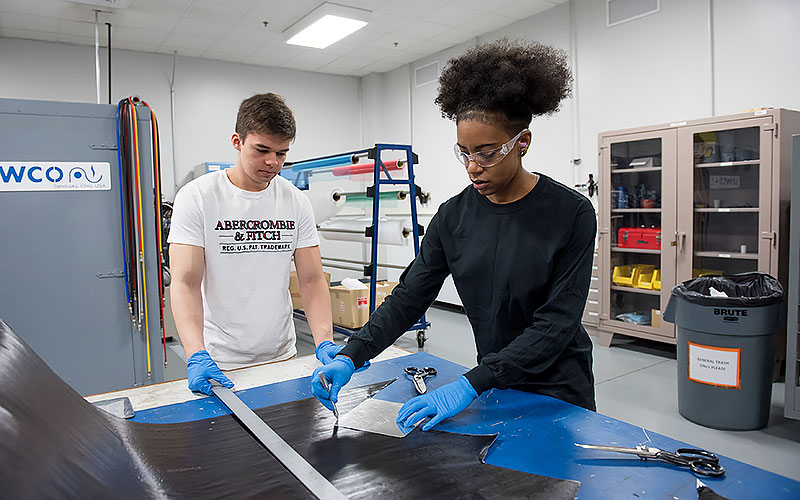Aircraft manufacturers face constant pressure to enhance efficiency and reduce emissions. One of the main ways they achieve these sustainability aims is by designing lighter planes that burn less fuel. This trend towards aerospace “lightweighting” heavily involves specialized aviation composites made by companies such as those at Aerodine Composites.
Lighter aircraft require less thrust to fly, resulting in substantial fuel savings over the life of the plane. As environmental regulations tighten, lightweighting with composites has become a crucial strategy for airplane makers to meet emissions targets. Nonetheless, introducing new materials presents technological and certification challenges that must be overcome through rigorous testing and process controls.
Replacing Metals with Composites
Traditionally, aluminum alloys made up nearly 80% of aircraft structures from fuselages to wings. But aviation composites now substitute considerable portions of metals. Made of reinforced plastics like carbon fiber or fiberglass, these composites equal or outperform aluminum in strength and stiffness at around half the weight. This directly cuts an aircraft’s mass to lower fuel consumption. For example, the latest generation of narrow-body airliners uses over 50% composites. Optimizing composite content means manufacturers strike the best balance between lightweighting benefits and production costs.
Withstanding Stress and Damage
Importantly, using more composites in aircraft does not undermine their resilience against flight loads and impacts. Aviation composites maintain exceptional strength-to-weight qualities under inflight conditions. And their layered construction localizes any defects incurred rather than letting them spread. Engineers also orient the reinforced fibers in composites precisely to withstand expected stresses. Moreover, aviation composites get tested to meet aviation authority damage tolerance standards before approval. All this ensures safety is not compromised by lightweighting measures.
Enhancing Aerodynamics
Beyond cutting weight, increased use of aviation composites also refines aircraft aerodynamics for boosted efficiency. When molding composites into curved components like wing skins, manufacturers align the reinforcement fibers to contour directions. This construction creates smooth, seamless surfaces with optimized airflow properties. Refined aerodynamics then translate into reduced drag and fuel savings. Composites also enable more radical ergonomic designs like the sweeping wings and fans of new regional jets for next-level performance.
Future-Proofing Aircraft
The exponential growth in air travel is driving demand for more cost-effective and eco-friendly designs. This means aviation composites will become even more prevalent moving forward. Next-generation narrow-body planes already contain over 50% composites by weight and will likely reach 65%. Regional jets also aim for between 50-80% composite content over current levels below 50%. And ongoing advances in composite technology itself will open capacity for further innovations. The superior configurability, durability and aerodynamics of these stratified materials ensure their integral role in future sustainable air mobility.
Supporting the Transition
The shift towards high-composite aircraft brings some near-term hurdles like revamping maintenance protocols and equipment for the unique properties and repair methods of these materials. But the long-term payoffs warrant industry-wide support for this transition. Maximizing aviation composites enables weight reductions topping 20% to curb massive fuel outlays and emissions by airliners. That is why stakeholders across the aerospace ecosystem, from designers to regulators, continue bolstering the development and integration of these game-changing lightweight materials.
Conclusion
With environmental impact rising as a priority, aircraft manufacturers are responding by embracing composites to replace hefty components. Carefully engineered aviation composites maintain structural integrity while enabling lighter and more aerodynamic designs as well as future innovations. As research continues to enhance composite properties and manufacturing techniques, the percentage of composites used in aircraft construction is projected to steadily increase over the coming decades. With a coordinated industry effort, aviation composites can drive the next leap in environmentally friendly air transportation.

